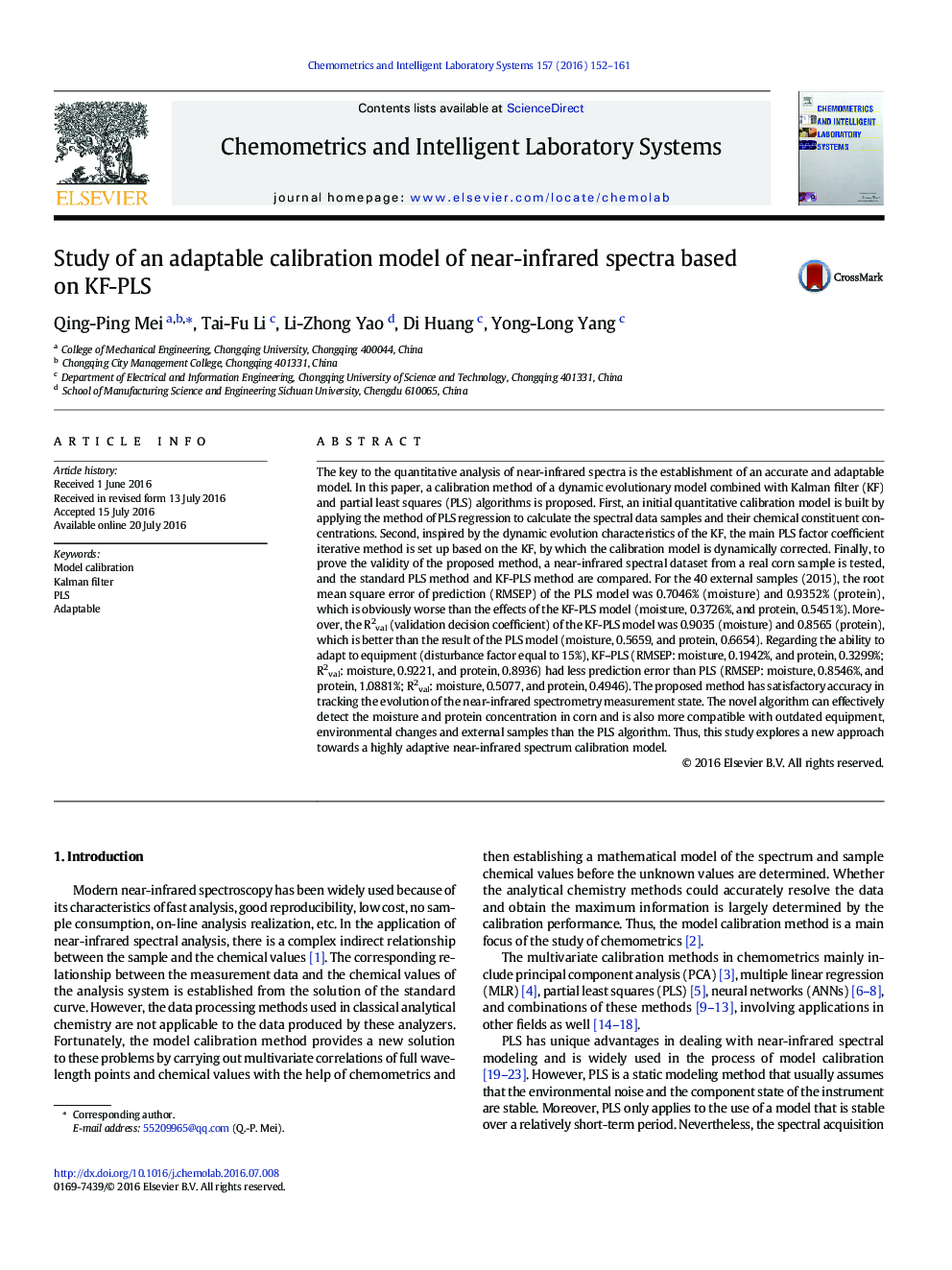| کد مقاله | کد نشریه | سال انتشار | مقاله انگلیسی | نسخه تمام متن |
|---|---|---|---|---|
| 1180140 | 1491522 | 2016 | 10 صفحه PDF | دانلود رایگان |

• We study the adaptable method of model calibration of chemometrics using NIRS.
• The calibration model established by KF-PLS has the ability of adaption to aging equipment and environmental change.
• The calibration model established by the method has the ability of adaption to external sample.
• The proposed method has a stronger adaptive ability than PLS.
• The proposed method has potential for industrial applications of long-term high-quality on-line analysis.
The key to the quantitative analysis of near-infrared spectra is the establishment of an accurate and adaptable model. In this paper, a calibration method of a dynamic evolutionary model combined with Kalman filter (KF) and partial least squares (PLS) algorithms is proposed. First, an initial quantitative calibration model is built by applying the method of PLS regression to calculate the spectral data samples and their chemical constituent concentrations. Second, inspired by the dynamic evolution characteristics of the KF, the main PLS factor coefficient iterative method is set up based on the KF, by which the calibration model is dynamically corrected. Finally, to prove the validity of the proposed method, a near-infrared spectral dataset from a real corn sample is tested, and the standard PLS method and KF-PLS method are compared. For the 40 external samples (2015), the root mean square error of prediction (RMSEP) of the PLS model was 0.7046% (moisture) and 0.9352% (protein), which is obviously worse than the effects of the KF-PLS model (moisture, 0.3726%, and protein, 0.5451%). Moreover, the R2val (validation decision coefficient) of the KF-PLS model was 0.9035 (moisture) and 0.8565 (protein), which is better than the result of the PLS model (moisture, 0.5659, and protein, 0.6654). Regarding the ability to adapt to equipment (disturbance factor equal to 15%), KF–PLS (RMSEP: moisture, 0.1942%, and protein, 0.3299%; R2val: moisture, 0.9221, and protein, 0.8936) had less prediction error than PLS (RMSEP: moisture, 0.8546%, and protein, 1.0881%; R2val: moisture, 0.5077, and protein, 0.4946). The proposed method has satisfactory accuracy in tracking the evolution of the near-infrared spectrometry measurement state. The novel algorithm can effectively detect the moisture and protein concentration in corn and is also more compatible with outdated equipment, environmental changes and external samples than the PLS algorithm. Thus, this study explores a new approach towards a highly adaptive near-infrared spectrum calibration model.
Journal: Chemometrics and Intelligent Laboratory Systems - Volume 157, 15 October 2016, Pages 152–161